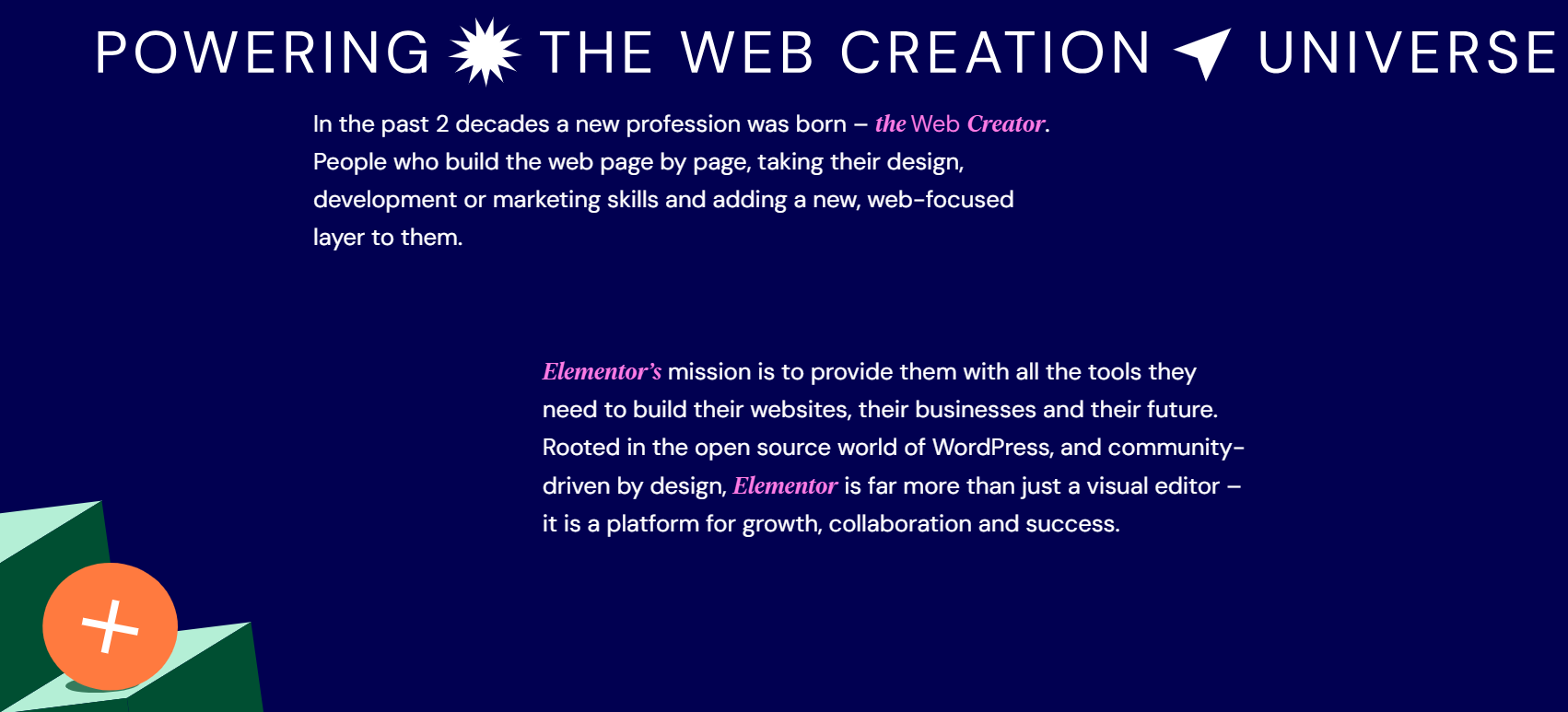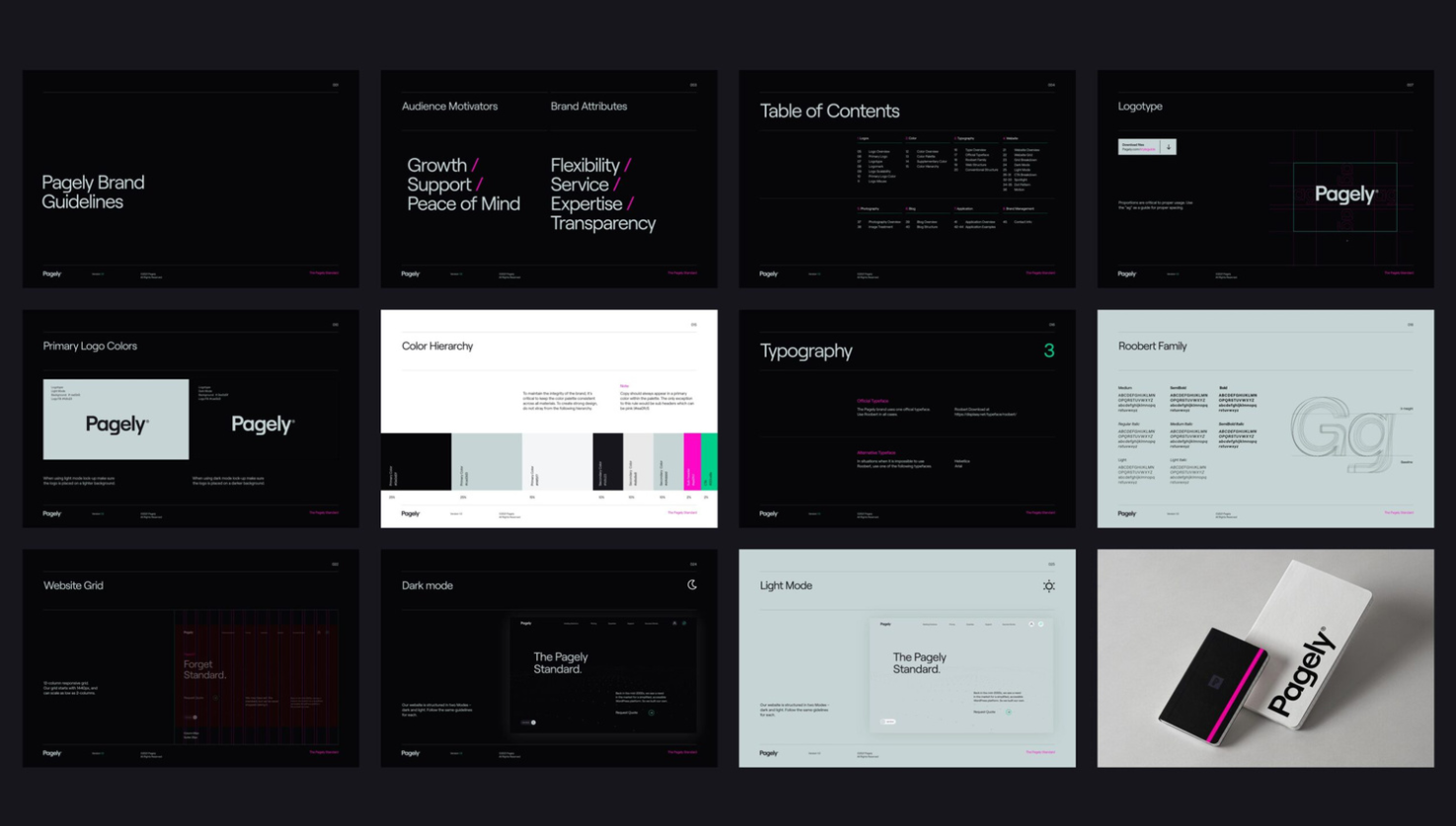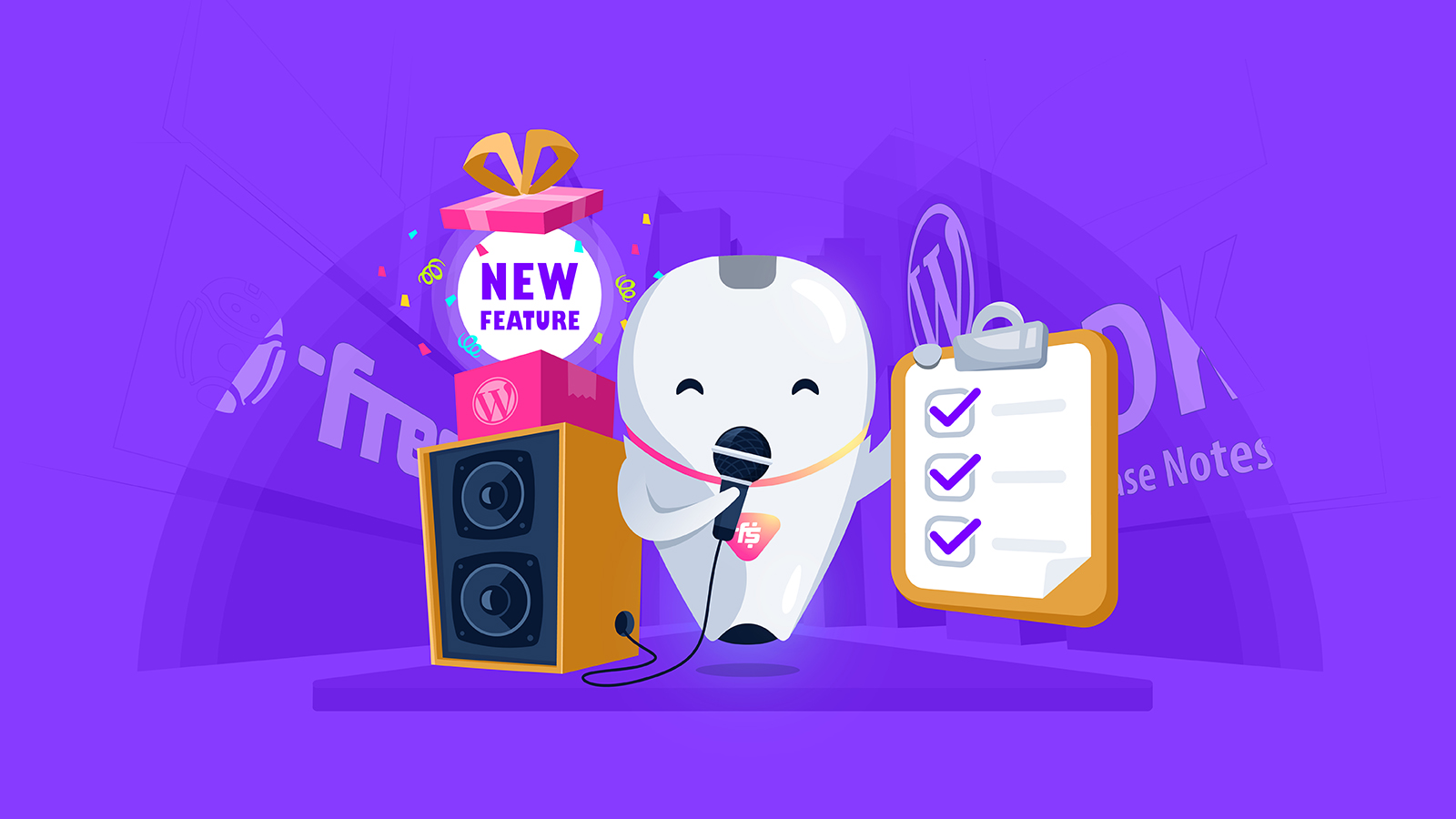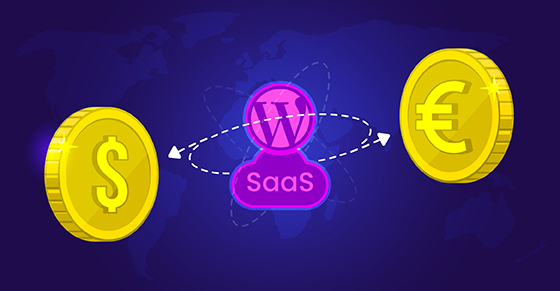|
|
Nowadays, breaking new ground in WordPress is like herding cats. The market’s matured: almost every possible niche is filled with plugins, themes, or static software offering solutions that compete for customers.
What’s a product maker or SMB to do? 😦 Is standing out still possible?
The short answer: Yes ✅
The hard truth: A great product alone will no longer cut it ❌
The solution: To win customers and make sales, you need a strategy to build brand trust, brand credibility, and brand differentiation ✨
What’s the difference between these three brand-building cornerstones? Allow me to explain with a metaphor involving three imaginary car owners (bear with me) and their car choices.
One is a farmer, the other a millionaire investor, and the last a young professional.
- Brand trust is why the farmer insists on buying Toyota trucks: in all the years he’s used them to herd cattle/pull tractors out of the mud, they’ve never given him engine trouble.
- The millionaire investor collects Ferrari sports cars not just for their high performance and cool look, but also because Ferrari has won more Formula One races than any other team. In other words, Ferrari has established brand credibility because they talk the talk + walk the walk.
- The young professional, on the other hand, is concerned about climate change and prefers cars with minimal environmental impact. That’s why she drives a Tesla. Being one of the first companies to commit to making cars that rely on clean energy and not fossil fuels lends them brand differentiation.
In other words: Brand trust is about instilling confidence, brand credibility means cultivating a positive reputation, and brand differentiation is about finding the x-factor that makes you stand out.
But how do these three branding factors apply in WordPress — specifically to smaller software makers?

In this article, Freemius’s Head of Brand Hadas Golzaker shares tips, insights, and strategies to help solo product makers and SMBs in WordPress establish brand trust, differentiation, and credibility to command attention and nurture loyalty.
Why Brand-Building Matters for Everyone in WordPress
Hadas says it’s a shame that many WordPress product makers overlook or under-invest in branding.
“For many solopreneurs and small teams, efforts are limited to outsourcing a graphic designer to create a logo and maybe having a copywriter generate content for their website. It’s a pity because investing a little more resources could really give them a leg up in their space.”
But branding is about more than visual elements and snazzy marketing materials.
Branding is also about how people perceive your product and company. There’s an emotional connection that needs to be established. When you’re saying or showing something to potential or existing customers, you want them to feel something. You want them to believe in your product.
Before joining Freemius, Hadas was Senior Brand Manager at Elementor, where she oversaw a major rebranding effort that ultimately helped take the company to new heights.
Building Brand Trust
Brand trust is the confidence consumers have in a brand’s reliability, integrity, and ability to meet their expectations consistently. It profoundly influences customers’ decision-making processes: they will almost always gravitate toward a brand they know and trust. Once achieved, people essentially follow and believe in an idea.

Several factors contribute to developing brand trust:
- Consistent delivery of high-quality products or services
- Transparent communication with customers
- A demonstrated commitment to reliability
Establishing brand trust takes time and perseverance and is the most difficult part of brand building. If you’re just starting, gaining your first customers and winning their trust should be your number one objective. As Mike Nelson of Print My Blog points out in his Freemius Success Story: “I think getting the first 10 active installs of a plugin is the hardest. Only slightly less hard is 100, and likewise 1000.”

SEO plugin company Yoast has solidified its position as a trustworthy brand in the WordPress ecosystem, having maintained its position as one of the top five popular plugins in the WP Repository for a good while. SEO is one of the most important marketing tactics, so being rated that high in an ocean of other plugins — never mind direct competitors — says a lot about what users think of them.
Establishing Brand Credibility
Closely intertwined with brand trust is brand credibility. While there are many parallels, brand credibility is about how customers perceive your brand.
“It’s all about authenticity,” Hadas says.
Does your brand have a reputation as a pioneer or groundbreaker in your niche? Is it revered for integrity and reliability?
There are various strategies to enhance brand credibility in the WordPress ecosystem:
- Leveraging customer testimonials and automating product review generation
- Contributing valuable content to the community via blogging, podcasting, YouTubing, or engaging and posting on X/Twitter
- Collaborations or partnerships with reputable brands or influencers
A great example of a WordPress company with brand credibility is Gravity Forms. They’ve achieved this through active participation in charitable projects like this one, sponsoring WordCamps, and contributing code improvements to the WordPress core.

This shows commitment to supporting and advancing WordPress, which has earned them the respect of developers and users.
Creating Brand Differentiation
An issue with saturated markets like WordPress is that competitors will always compete to establish themselves as the most trustworthy and credible brand in their niche.
This is where brand differentiation comes into the picture. It’s the special sauce that sets your brand apart and captures the attention of potential customers.
Strategies for brand differentiation in WordPress include:
- Identifying and highlighting unique selling propositions
- Crafting a compelling brand narrative (more on this soon)
- Focusing on specialized features or finding spaces within your niche to capitalize on
You’re always on the front foot if you’re the first brand to offer an original product or service. But because WordPress is so saturated, this is unlikely. You really need to focus on finding gaps and then differentiating your brand in a meaningful way — then you have a shot at standing out.
But does brand differentiation mean reinventing the wheel? Not necessarily. It involves identifying and emphasizing the unique qualities that distinguish your brand from your competitors.
Serbian hosting service Hostinger is a great example of a brand that’s set itself apart through visual differentiation in a saturated market:

Think of their competitors, Bluehost and SiteGround. There’s no real difference between these companies; they all sell the same thing.
What makes Hostinger stand out is that the older, more established hosting companies all have similar, generic-looking branding. Hostinger, on the other hand, presents themselves differently simply because they’ve shown edge and innovation by branding with cool, modern designs.
On the topic of using visual elements to stand out:
Your brand needs to pop. If you’ve been in a WordCamp SWAG area, you’ll know there’s a TON of blue and purple.
One of the quickest wins for software makers and SMBs in our space right now — whether you’re rebranding or getting started — is to opt for a visual scheme different from all the rest.
It’s important — critical — to invest in being different from the rest.
Now that we’ve covered the differences between brand trust, credibility, and differentiation, let’s look at how you can put them into practice.
Practical Steps for Building Your WordPress Brand
1. Market Research
Start by conducting market research to understand your target audience’s needs and preferences. Use this information to inform your brand identity and create messaging that resonates with your audience and sets you apart from competitors.
Be sure to research your competitors, too.
“Whenever I’m undertaking a rebranding effort, I always research the five biggest competitors,” Hadas says.
Creating a competitor list is something every company should do. It helps you identify and understand competitors’ weak spots and how you can leverage them into strengths for your brand. But, when you identify an area for improvement, you need to be 100% sure it’s achievable. Failing to deliver can harm your reputation.
2. Developing Your Brand Tone
Brand tone is the style, voice, and personality you want to communicate to your audience. It establishes how your brand interacts with customers and shapes their perceptions of your products or services and, ultimately, whether they feel connected to them.
Developing your brand tone involves:
- Language style (formal, casual, conversational)
- Tone (friendly, authoritative, playful)
- Overall personality (professional, innovative, empathetic)
These attributes should align with your brand identity and resonate with your target audience. Your brand tone must be consistent across all touchpoints, including your website, social media channels, marketing materials, and customer interactions.
3. Create a Brand Narrative
A compelling brand narrative can engage customers emotionally and give them personal motivation to buy your products or services.
It communicates your essence, vision, and values. If you create a product or service and people relate to your story — in other words, the reason you saw a need and started something — they’ll connect with it on a higher level.
The story of Slack is an excellent example. In 2012, Stewart Butterfield — who also co-founded Flickr — watched his browser-based multiplayer game Glitch go up in smoke. To salvage the last of his funds and save his company, Tiny Speck, he resorted to making a communication tool he’d developed available to the public.
That communication tool, of course, was Slack. Butterfield created it as an internal platform for Tiny Speck to cancel out employee communication via email and believed it could be useful for other companies too.
Beta-testing started in 2013 and Slack was released to the public in 2014. The rest — as they say — is history.
Over the past decade, Slack fundamentally changed the way many companies function. It canceled out the closed circuit of email by replacing it with a streamlined tool, which has revolutionized internal communication in businesses. Slack has adopted this forward-thinking, innovative mindset as the central focus of its brand narrative.
Slack is popular in the WordPress ecosystem, and product makers looking to create a brand narrative and differentiate themselves should take note of why.
Ultimately, the point of a WordPress product — especially plugins — is to make the customer’s life easier. For example, if you create a WordPress form plugin, there are 100% going to be competitors in that niche. So, over and above making your mission and vision resonate with customers, you have to figure out how your form plugin improves the customer’s life in ways that competitor products don’t. It could be a flagship feature, a fresh, modern design, a better layout, colorful buttons, etc.

Elementor founders Ariel Klikstein and Yoni Luksenberg wanted to make web design accessible to non-developers, and their brand narrative reflects this spirit of open access and collaboration
4. Visual Identity
Visual identity represents your company, its journey, and its values. You have to invest in your design so that it speaks to your target audience on a deeper — even subconscious — level. It doesn’t matter if you like/dislike your visual identity — what truly matters is that it resonates with users, so you may have to make tough compromises.
Hadas admires Pagely’s visual identity. The hosting company’s mainly black, white, and gray appearance with sprinklings of green and pink pastels lends an undeniable cool factor to their look:

Investing in the services of an experienced brand specialist and/or graphic designer can be a game-changer if you can afford it. They have the necessary expertise, insights, and creativity to help you create a cohesive visual identity and brand narrative that strikes a chord with users and sets you apart from competitors.
5. Consistent Branding
Focus on implementing consistent branding across all touchpoints, from your website and marketing materials to customer interactions. This includes maintaining a cohesive visual identity, tone of voice, and brand personality across all channels.

eCommerce email marketing and SMS platform Omnisend provides clear instructions for customers about using their brand correctly across channels to ensure consistency
6. Useful, Memorable SWAG
When you create SWAG for a conference like WordCamp, make something useful and relevant.
Ensure your SWAG is tailored to suit the occasion so it leaves a lasting impression. For example, consider branded caps for WordCamps in warm environments — there’s a high chance people will wear them to cool off and escape the sun.
This is not to say more “generic” SWAG, like pins or stickers, should be dismissed. It depends on the event or the occasion. If the messaging on these items is strong, it can be the better choice. Overthinking your SWAG and offering something out of context is not what you want.
7. Customer Feedback and Continuous Communication
Pay attention to and act on customer feedback.
Are they satisfied with your product and/or service? Does your brand instill confidence and are you reliable? Where can you improve?
Because audiences and ecosystems evolve, brand strategy requires consistent refinement — read: optimizing everything from visual identity to tone of voice — to cater to changing needs and to stay ahead of competitors.
“I think the easiest way to measure brand performance — in other words, if your branding works or not — is the level of engagement with your content on social media,” Hadas says.
People on social media don’t tend to go deep: they’re just scrolling through their feeds. If your content makes them stop and think, you’ve successfully created an emotional connection.
Another effective way to keep your finger on the pulse is to stay connected to the WordPress community. Understanding what users want and where their values lie is essential for staying relevant.
As the needs of software makers and small businesses change, we as Freemius recognize the importance of practicing what we preach to keep up and evolve with them.
Grab a free copy of our Cheat Sheet for
Selling Plugins and Themes
A growth roadmap with concise, actionable tips for every milestone of WordPress product development.

Why Freemius is Undertaking a Brand Refresh
“We’re celebrating our tenth birthday soon,” says Freemius founder and CEO Vova Feldman.
“When you think about that and take stock of how the company has evolved, it’s become clear that we are serving a much larger, more diverse community than when we started. Our offering is no longer limited to WordPress, although we still have firm roots in the ecosystem. We’re also expanding into the micro-SaaS space. Rebranding is a necessary step because it communicates that Freemius is evolving with our audience’s needs.”
To this point: Rebranding does not mean you are doing something wrong. “Things change and so should you,” Hadas explains.
The worst thing you can do is not embrace change. Rebranding at an appropriate time shows your finger is on the pulse, you’re listening to user feedback, and you’re committed to moving (and improving) with the times.
Empowering Your Brand Empowers You to Thrive in WordPress
We hope this article has convinced you that brand building isn’t reserved for the big players. Yes, it requires strategic thinking and investment, but solo software makers and SMBs who do it wisely can leverage its power to establish their presence and flourish.
Whether you’ve been active in the industry for a while or are just getting started, take a leap and embrace the brand-building journey. It might just be your ticket to (even greater) success 😉
If you’d like to learn more about how to kickstart your (re)branding efforts, find us on X. And if you’re attending WordCamp Europe in June and would like to consult Hadas in person, feel free to book an appointment with her here.








